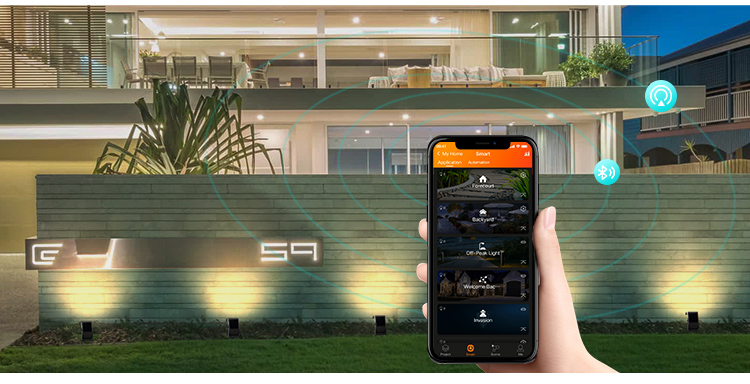As global climate change intensifies, its impact on urban development is becoming increasingly evident. The frequency of extreme weather events, the vulnerability of urban infrastructure, and the challenges of energy management are forcing us to re-examine our urban development models. Against this backdrop, solar wall sconces, as a green and renewable energy solution, are gradually becoming a key part of sustainable urban development. In this paper, we will explore the role of solar wall sconces in combating climate change and promoting sustainable urban development and look forward to their future direction.
Impact of Climate Change on Urban Development
- Impact of Extreme Weather Events
In recent years, extreme weather events such as floods, droughts, heatwaves, and strong storms have occurred frequently around the globe, causing severe damage to urban infrastructure. These events not only threaten the lives of urban residents but also significantly disrupt the normal functioning and economic development of cities. For example, floods can lead to power supply disruptions and transportation paralysis, while extreme heat increases the city’s electricity load, exacerbating energy supply constraints. - Challenges of Urban Energy Management
Cities, as major energy consumers, face enormous challenges in managing their energy. The reliance on traditional fossil fuels not only exacerbates greenhouse gas emissions but also leads to fluctuating energy prices, increasing the economic burden on cities. Meanwhile, the rapid pace of urbanization has led to a continuous increase in energy demand, making it crucial to ensure energy supply while achieving energy savings and emission reductions.
Global Trend of Sustainable Urban Development
In response to global climate change, sustainable urban development has become a consensus among governments and societies. By adopting green energy solutions, optimizing energy structures, and improving energy efficiency, we can achieve a harmonious balance between urban development and environmental protection. As an important representative of green energy, the application of solar wall lights in urban lighting is a concrete manifestation of this trend.
Adopting Green Energy Solutions
Cities around the world are actively exploring green energy solutions to combat climate change. Solar wall sconces have become the first choice for urban lighting retrofits due to their clean, renewable, and easy-to-install advantages. They not only reduce the use of fossil fuels but also lower greenhouse gas emissions, contributing to sustainable urban development.
Strengthening Policies and Practices
Governments have introduced policies to encourage and support the development and application of green energy technologies such as solar wall lights. Urban planners are also integrating solar wall lights into urban landscapes to enhance the city’s image and improve residents’ quality of life.
The Role of Solar Wall Lights
- Reducing the City’s Carbon Footprint
Solar wall lights achieve zero emissions by converting solar energy directly into electricity. Compared to traditional streetlights, solar wall lights significantly reduce the city’s carbon footprint. As technology continues to advance, the conversion efficiency of solar wall sconces will improve, providing even stronger support for urban emissions reduction goals. - Energy Savings and Cost-Effectiveness
Solar wall lights excel in terms of energy efficiency and cost-effectiveness. They do not require an external power source, reducing the burden on the grid and minimizing power transmission losses. Additionally, with the advancement of solar panel and energy storage technologies, solar wall lights now have longer lifespans and relatively low maintenance costs, making them an economical and practical choice for urban lighting.
Innovations in Solar Wall Light Technology
- Latest Technological Advances
Solar wall light technology continues to evolve, with recent innovations including high-efficiency photovoltaic cells, intelligent control systems, and more durable materials. For example, the SGL-15 wall sconce series utilizes monocrystalline silicon solar cells with higher energy conversion efficiency, providing up to three days of continuous lighting in rainy weather. - Application of Smart Solar Systems
Smart solar wall light systems can automatically adjust brightness according to ambient light intensity and foot traffic to improve energy utilization. The SGL-15 wall light series integrates ALS 2.3 core technology, which automatically adjusts brightness in different modes to ensure optimal performance under various environmental conditions.
Successful Case Studies
- Urban Practice Stories
Many cities have successfully implemented solar wall light programs with remarkable results. For example, a city has widely installed solar wall lights in parks, streets, and residential areas, which not only beautifies the urban environment but also significantly reduces energy consumption and carbon emissions. The successful implementation of these projects has improved the city’s sustainability and enhanced residents’ quality of life, earning widespread acclaim. - Lessons Learned
These success stories provide valuable insights. First, governments should introduce policies to encourage and support the research, development, and application of green energy technologies like solar wall lights. Second, city planners should carefully consider the city’s characteristics and residents’ needs when planning the location and number of solar wall lights. Finally, community engagement is crucial for promoting and implementing solar wall light projects and advancing sustainable urban development.
Future-Oriented Strategies
- Strategic Recommendations for City Decision-Makers
City policymakers should consider the following when selecting and implementing solar wall light solutions: First, assess the city’s climate conditions and light levels to determine the best locations for installations. Second, prioritize products with high energy efficiency and intelligent control features, such as the SGL-15 series. Finally, consider long-term maintenance and management costs to ensure the sustainability of the project. - Dual Benefits for Economy and Environment
By widely adopting solar wall lights, cities can achieve both environmental and economic benefits. The application of energy-efficient technologies will significantly reduce public lighting costs, while reduced carbon emissions will garner more support and recognition in global climate policy.
Solar wall lights play a crucial role in combating climate change and promoting sustainable urban development. As technology continues to advance and costs decrease, solar wall sconces will become increasingly important in future urban infrastructure. Through effective strategies and widespread application, cities can realize both economic and environmental benefits, creating a more sustainable living environment for future generations.


